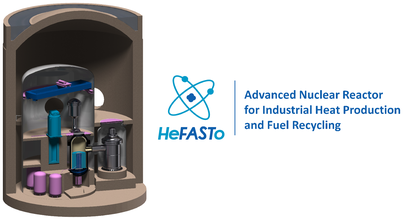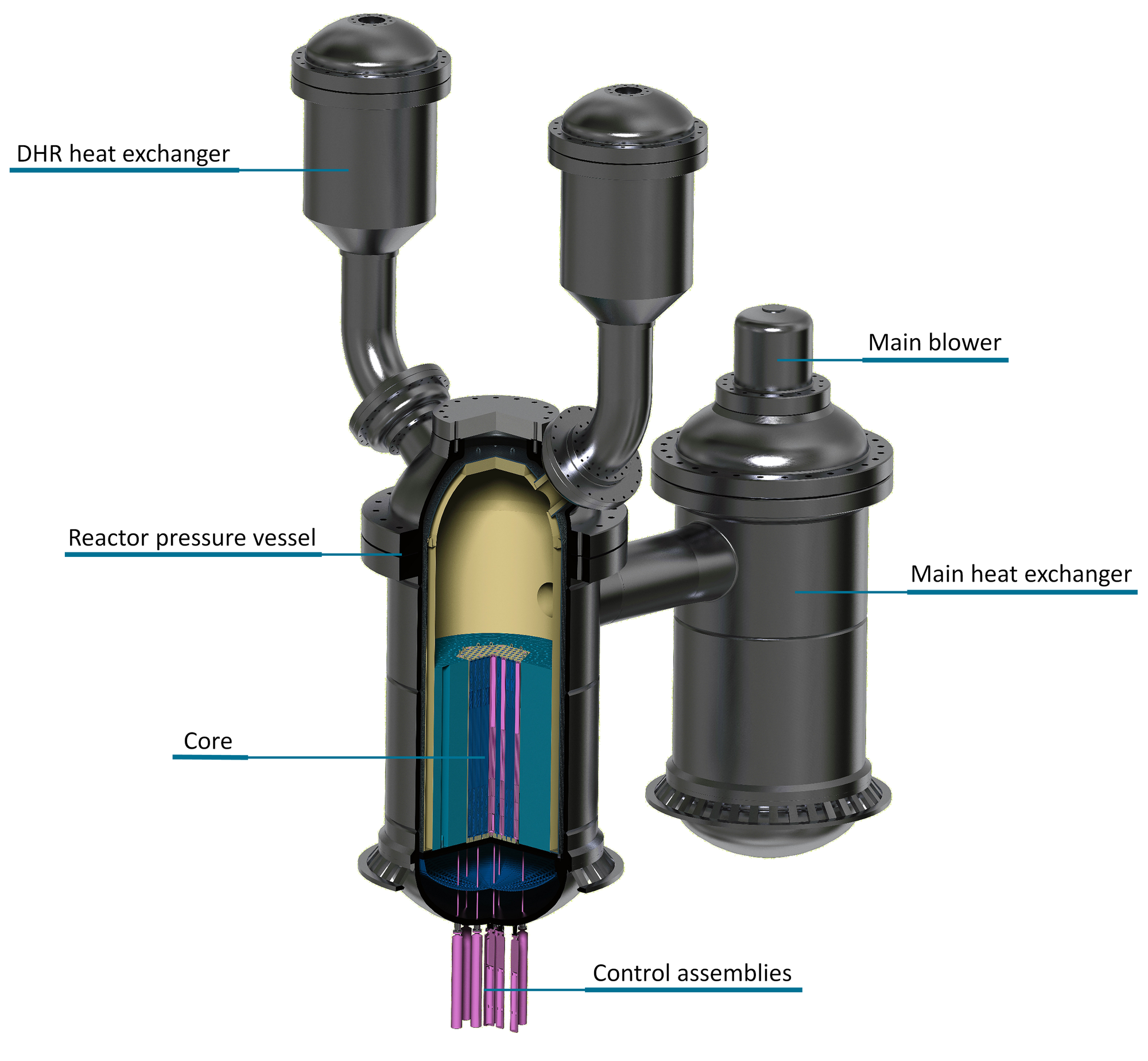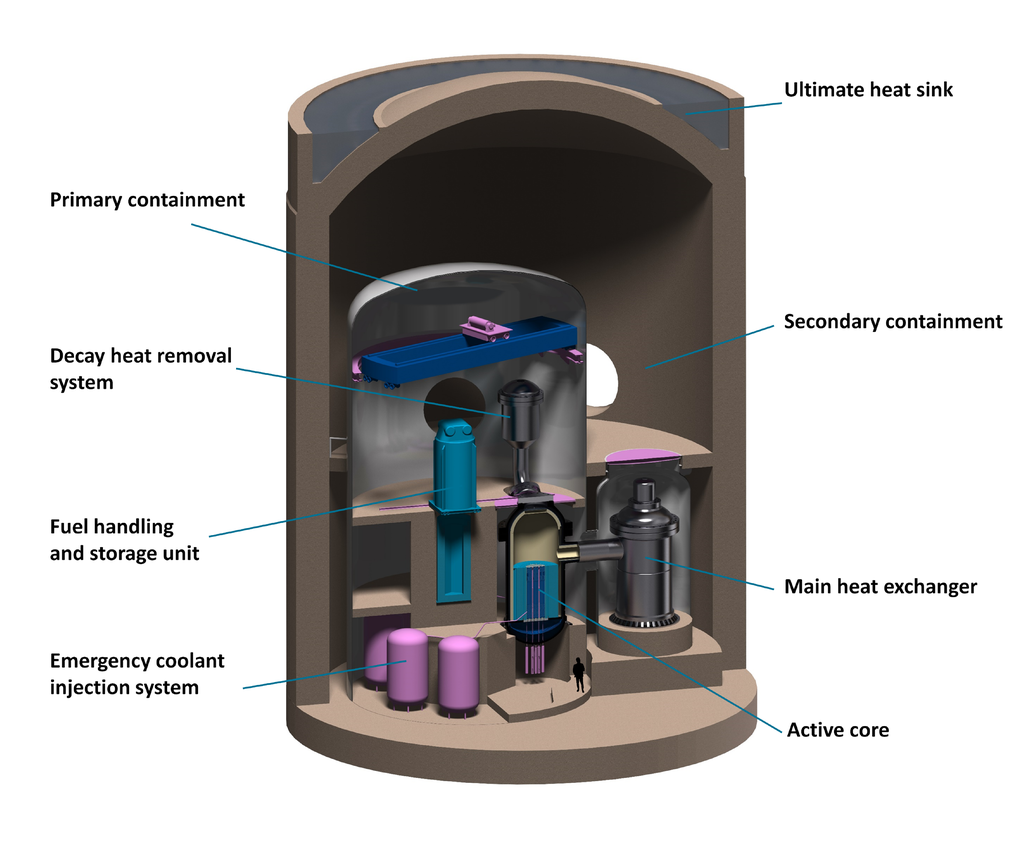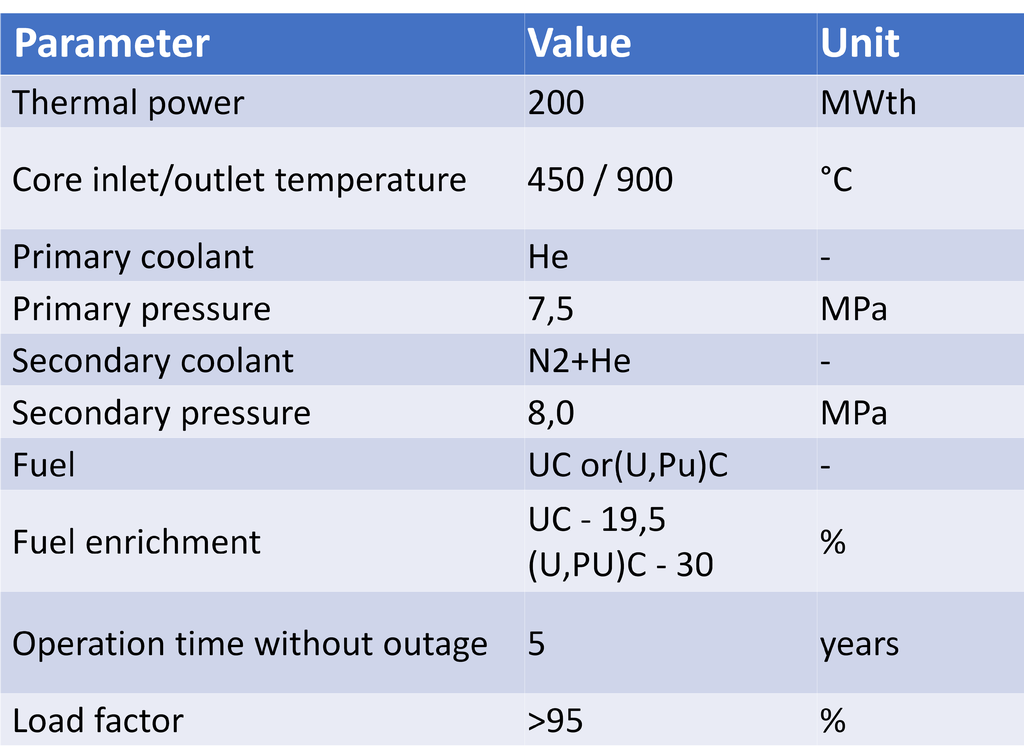Breadcrumbs navigation
HeFASTo is a concept of a small modular reactor based on the Gas-cooled Fast Reactor (GFR) technology. In UJV Group, it follows a long-term program in GENIV development and GFR R&D for the project of a GFR demonstrator named ALLEGRO.

HeFASTo is a concept of a small modular reactor based on the Gas-cooled Fast Reactor (GFR) technology, with thermal power of 200 MW and core outlet temperature reaching 900°C. It is envisaged as a versatile facility proving a wide range of services from electricity production, high-potential heat production for the connected chemical industry or for very effective hydrogen production, to the utilization of the fast spectrum to close the fuel cycle and produce minimum new spent fuel and other radioactive waste. This versatility should ensure that HeFASTo will not only be able to co-exist with a fleet of light water reactors but directly leverage on synergies such as spent fuel reprocessing.
The crucial advantage over graphite-moderated high-temperature gas-cooled reactors reaching similar power and temperature levels is the fact that is a pure fast spectrum reactor, enabling breeding of new fissile material on the go and utilization of reprocessed fuel from other reactors.
The design of HeFASTo is based on the maximum possible level of modularity and use of cutting-edge materials and technologies. The majority of components is designed as standardized parts ready for mass production with an assembly line, that will be completed in modules and just connected on the site. It should not only lower the construction costs but also means easier in-service inspections and repairs.
Top-level of safety is ensured by a variety of highly innovative fully passive safety systems, which function relies exclusively on the effect of basic physical phenomena such as gravitation and pressure difference.
Widespread commercial deployment of the reactor is connected with the predicted sharp increase in demand for mass production of hydrogen, as well as reprocessing of the spent fuel from the large fleet of light water reactors and is foreseen after 2040. Currently, the project is in its pre-conceptual phase, with an outlook for entry of a strategic investor after 2025.

HeFASTo is a R&D project of UJV Rez, a. s., under the responsibility of Division of Nuclear Safety and Reliability. Technology development has been done by the GENIV R&D Group of the Division.
The GFR technology R&D has a tradition of more than 10 years in UJV Rez. Since 2012, we have been a full member of V4G4 Center of Excellence consortium, which is responsible for the development of a GFR technology demonstrator ALLEGRO. In 2018, the Technology Agency of the Czech Republic recognized, under one of its program calls, fast reactors as one of the priorities of national nuclear R&D.
Currently, UJV Rez is active in 7 national and 3 international R&D projects dedicated to GFR, leading a significant portion of them.
General scheme of the reactor



2002……….. Beginning of modern era of GFR R&D, ETDR and ALLEGRO projects
2010……….. Beginning of GFR development in ÚJV Řež, a. s.
2021………..Start of HeFASTo development
2025………..Finishing the pre-conceptual design including feasibility study, business plan, start of searching for a strategic partner
2028………..Conceptual design phase ongoing, deadline of entry of the strategic partner to follow the schedule
2035………..Finishing the basic design, start of the licensing process
2040………..Building license obtained, start of construction
The highest priority in GFR R&D must be assigned to areas unique for the technology, where there is a limited or even no possibility to adopt or adapt existing and proven solutions. Many obvious synergies exist between VHTR and GFR, such as the same type of coolant with very similar target primary temperatures and pressure. So, a lot of solutions working for HTR in normal operation, such as sealing, valves and blowers, can be utilized in GFR as well.
However, in accident conditions, behaviour of the two systems is very different. HTR can rely on cooling using conduction and radiation, and its huge mass of graphite in the core providing substantial heat sink. For a compact core of GFR, it is necessary to employ specialized systems ensuring constant and sufficient flow of coolant through the core. To find technical solutions to this problem that would not put the overall economic feasibility of the technology at risk is one of the primary goals of R&D activities on GFR.
Another topic specific to GFR is the fuel and core materials in general. Combination of very high temperatures and fast spectrum of neutrons puts very high demands on the used materials. Development of this area had been long rather slow, however, after the Fukushima accident, the boom in development of so-called ATF (accident tolerant fuel materials) is favourable also for GFR, especially in SiC composites.
The HeFASTo project is open for collaboration for both the Czech and foreign entities.
Framework for collaboration is established on several levels of participation, for more information, please contact the head of the GENIV R&D group, Petr Vacha.
